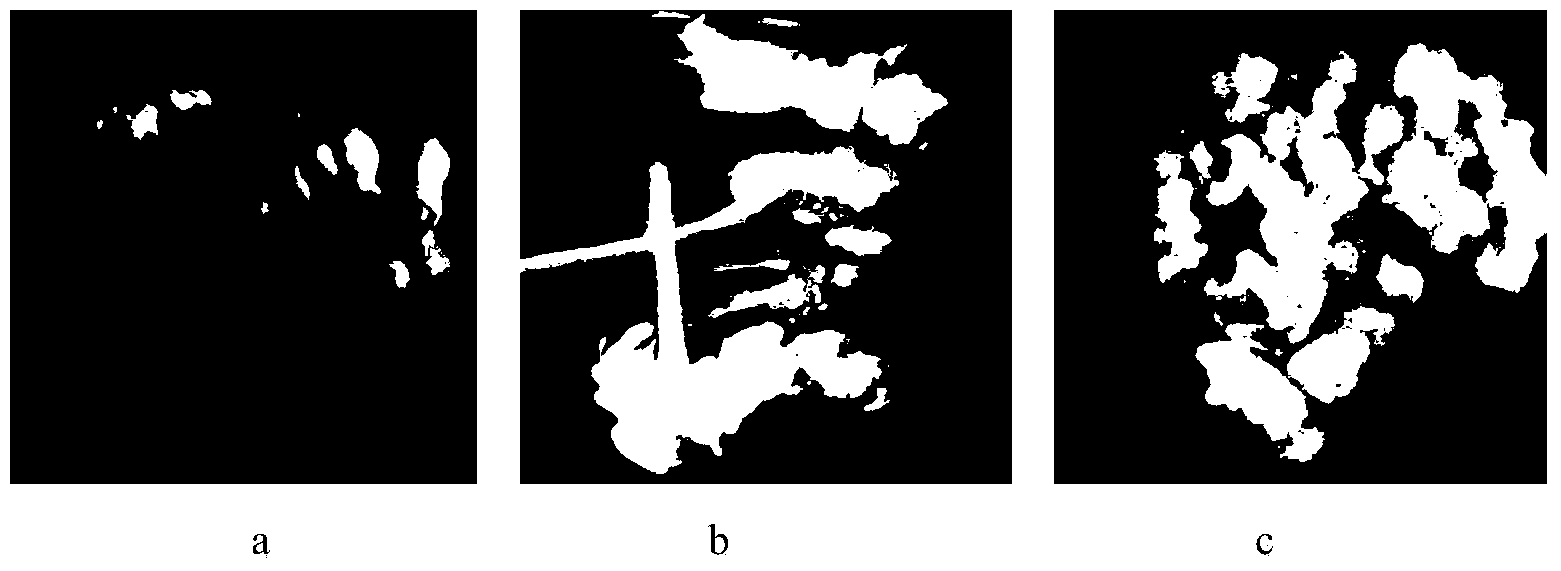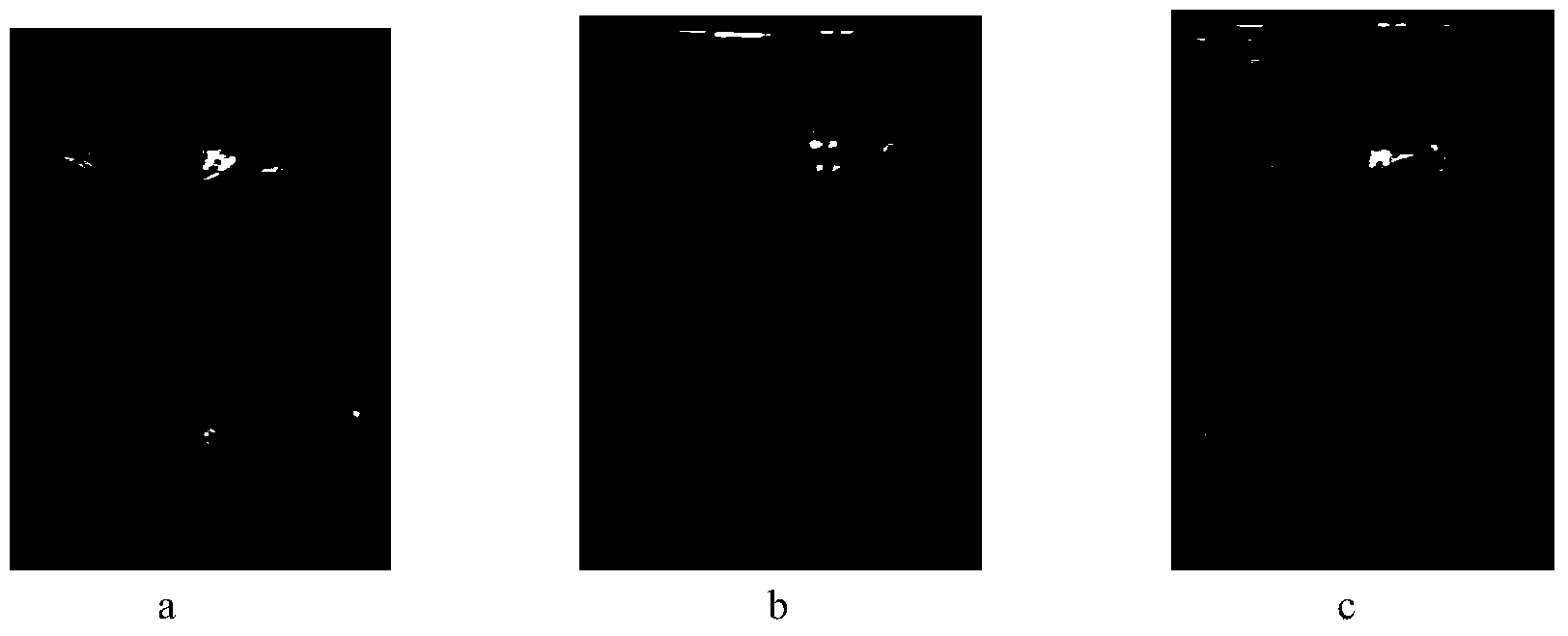Hormone-free corn callus regeneration method
A callus, hormone-free technology, applied in the field of plant tissue culture, can solve the problems of increased frequency of maize genome variation, bound genetic engineering breeding technology, and high deformity rate of regenerated plants, so as to improve the fertility rate of plants and make them easy to transplant and survive , the effect of saving experimental cost
- Summary
- Abstract
- Description
- Claims
- Application Information
AI Technical Summary
Problems solved by technology
Method used
Image
Examples
Embodiment 1
[0026] Example 1: Effect of sucrose content in regeneration medium on differentiation and regeneration of super sweet corn inbred line 1132
[0027] (1) Select the super-sweet corn inbred line 1132, which is crisp and grainy and grows well. Injured tissues were transferred to embryoid body induction medium containing 20,000 mg / L, 40,000 mg / L, 60,000 mg / L, and 80,000 mg / L of sucrose, respectively. The composition of the embryoid body induction medium is: MS macroelement (that is, the macroelement in MS medium) + MS trace element (that is, the trace element in MS medium) + inositol 250mg / L + thiamine hydrochloride (vitamin B1) 3.5mg / L+pyridoxine niacin (vitamin B6) 1.0mg / L+niacin 0.5mg / L+glycine 4.0mg / L+sucrose (concentrations are 20,000mg / L, 40,000mg / L, 60,000mg / L and 80,000mg / L)+proline 300mg / L+hydrolyzed casein 100mg / L+MES500mg / L+plant gel 2500mg / L, pH5.8. The culture temperature is 24-26°C. When the culture reaches the third week (20th day), it is observed that on the med...
Embodiment 2
[0030] Embodiment 2: Carry out regeneration culture with super sweet corn inbred line 1132 callus
[0031] (1) Select 72 pieces of crisp, granular callus with good growth, and transfer them to culture dishes poured with embryoid body induction medium, and place 6 calli on each dish (10 cm in diameter). damage tissue. The composition of the embryoid body induction medium is: MS macroelements + MS trace elements + inositol 250mg / L + thiamine hydrochloride (vitamin B1) 3.5mg / L + nicotinic acid pyridoxine (vitamin B6) 1.0mg / L + nicotinic acid 0.5 mg / L+glycine 4.0mg / L+sucrose 60,000mg / L+proline 300mg / L+hydrolyzed casein 100mg / L+MES500mg / L+plant gel 2500mg / L, pH 5.8, culture temperature 25°C, cultured for 3 weeks The embryoid body was fully induced on the callus, and the shape of the embryoid body was as follows: figure 1 as shown in a.
[0032] (2) Transfer the 72 embryoid bodies obtained in step (1) to glass culture bottles containing regeneration medium to cultivate regenerate...
Embodiment 3
[0034] Embodiment 3: Carry out regeneration culture with HiII callus
[0035] (1) Select crisp, granular HiII with good growth (has been described in "Ma Yunxia et al. Agrobacterium-mediated genetic transformation of glyphosate-resistant gene (sxglr-11) in maize, Shanxi Agricultural Science, 2009, 6" 90 pieces of calli from public) were transferred to culture dishes filled with embryoid body induction medium, and 6 pieces of calli were placed on each culture dish (10 cm in diameter). The composition of the embryoid body induction medium is: MS macroelements + MS trace elements + inositol 250mg / L + thiamine hydrochloride (vitamin B1) 3.5mg / L + nicotinic acid pyridoxine (vitamin B6) 1.0mg / L + nicotinic acid 0.5 mg / L+glycine 4.0mg / L+sucrose 60,000mg / L+proline 300mg / L+hydrolyzed casein 100mg / L+MES500mg / L+plant gel 2500mg / L, pH5.8, culture temperature 25℃, culture for 3 weeks (20 days), embryoid bodies were fully induced on all calli, and the morphology of embryoid bodies was as f...
PUM
 Login to View More
Login to View More Abstract
Description
Claims
Application Information
 Login to View More
Login to View More - R&D
- Intellectual Property
- Life Sciences
- Materials
- Tech Scout
- Unparalleled Data Quality
- Higher Quality Content
- 60% Fewer Hallucinations
Browse by: Latest US Patents, China's latest patents, Technical Efficacy Thesaurus, Application Domain, Technology Topic, Popular Technical Reports.
© 2025 PatSnap. All rights reserved.Legal|Privacy policy|Modern Slavery Act Transparency Statement|Sitemap|About US| Contact US: help@patsnap.com



